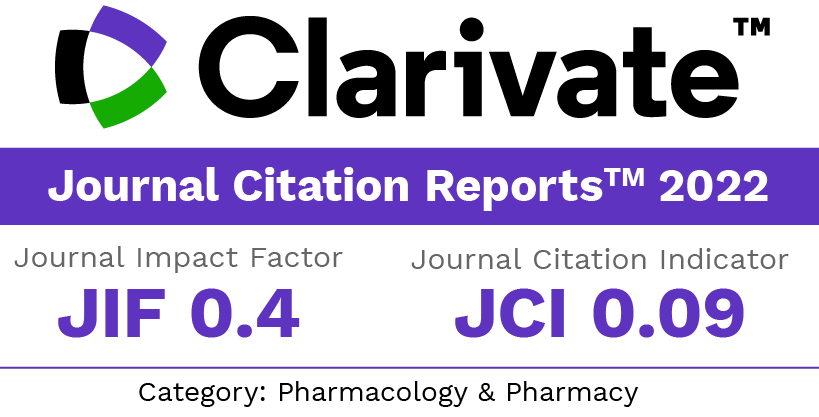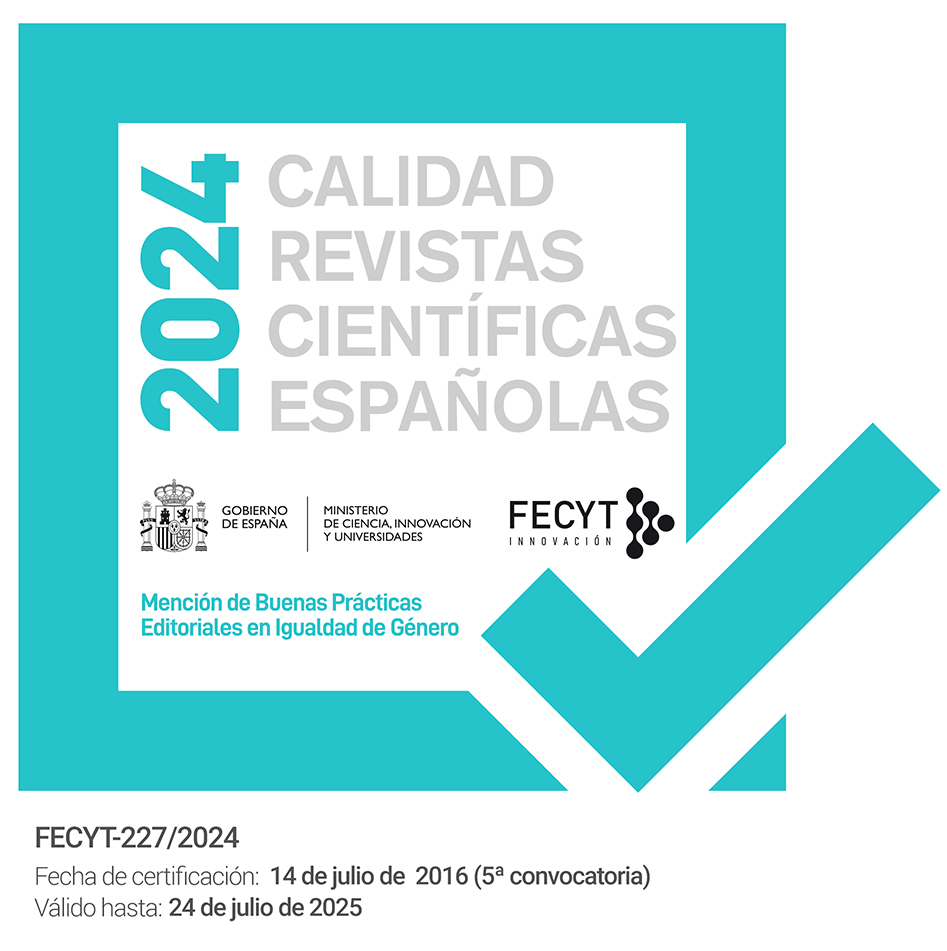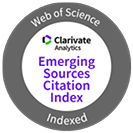Chagas disease in Spain
Keywords:
Trypanosoma cruzi, Chagas disease, Immigration, SpainAbstract
The notable increase in immigration from Latin-American countries to Spain during the last five years, particularly people from Bolivia, has converted Chagas disease or American trypanosomiasis, into a public health problem in Spain. The number of people from countries in which Chagas disease is endemic now living in Spain is estimated to be near two and half million. In the absence of vector species responsible for transmission, the disease may be transmitted by blood transfusion and tissue transplants as well as by vertical transmission. This work reviews the current knowledge and epidemiological situation of this parasitosis in Spain.Downloads
References
Galeano, E. Chagas, una tragedia silenciosa. Médicos sin Fronteras, 2005.
Schmunis GA, Yadon ZE. Chagas disease: A Latin American Health problem becoming a World Health problem. Acta Trop 2010; (En prensa)
Gállego, J. Manual de Parasitología. Morfología y biología de los parásitos de interés sanitario. Edicions UB, 2ª Ed. 2003.
Gascón J, Bern C, Pinazo MJ. Chagas disease in Spain, the United States and other non-endemic countries. Acta Trop 2009; (En prensa)
Gascón J y Grupo de Trabajo del taller “Enfermedad de Chagas Importada: ¿un nuevo reto se Salud Pública? Diagnóstico y tratamiento de la enfermedad de Chagas importada. Med Clin (Barc) 2005; 1235: 230-235.
Schijman AG, Altcheh J, Burgos JM, Biancardi M, Bisio M, Levin MJ et al. Aetiological treatment of congenital Chagas’ disease diagnosed and monitored by the polymerase chain reaction J Antimicrob Chemother 2003; 52: 441-449.
Viotti R, Vigliano C, Lococo B, Bertocchi G, Petti M, Alvarez MG et al. Long-term cardiac outcomes of treating chronic Chagas disease with benznidazole versus non treatment: a nonrandomized trial. Ann Intern Med 2006; 144: 724-734
Schofield CJ, Jannin J, Salvatella R. The future of Chagas disease control. Trends Parasitol 2006; 22: 583-588
Dias JCP, Silveira AC, Schofield CJ. The impact of Chagas disease control in Latin América- A review. Mem Inst Oswaldo Cruz 2002; 97: 603-612.
Benchimol-Barbosa PR. Trends on acute Chagas Disease transmitted by oral route in Brazil: Steady increase in new cases and a concealed residual fluctuation. Intl J Cardiol 2009; (En prensa)
Villalba R, Fornes G, Alvarez MA, Roman J, Rubio V, Fernandez M. et al. Acute Chagas'disease in a recipient of a bone marrow transplant in Spain: case report. Clin Infect Dis 1992; 14: 594-595.
Instituto Nacional de Estadística. Padrón Municipal: Explotación estadística. http://www.ine.es Acceso 11 Enero 2010
Pérez de Ayala A, Pérez Molina JA, Norman F, López-Vélez R. Chagasic cardiomyopathy in immigrants from Latin America to Spain. Emerg Infect Dis 2009; 15: 607-608.
Castro E. Chagas’ disease: lessons from routine donation testing. Transf Med 2009; 19: 16-23.
Piron M, Vergés M, Muñoz J, Casamitjana N, Sanz S, Maymó RM, et al. Seroprevalence of Trypanosoma cruzi infection in at-risk blood donors in Catalonia (Spain). Transfusion 2008; 48: 1862-1868.
Castro E. Transfusión sanguínea y enfermedad de Chagas; iniciativas en Centros de Transfusión de España. Enf Emerg 2006; 8 (Supp1): 48-50.
Abalo M, Adelantado M, Areal C, Castrillo A, Castro A, Cid J, et al. Tracing of one year of Chagas screening at the Centro de Transfusión de Galicia concerning a positive blood donor. Vox Sanguinis 2007; 93 (Supp. 1): 140.
Ontañon A, Arroyo JL, Romon I, Amunarriz C, Hermosa V. Evaluation of a strategy for Trypanosoma cruzi screening and its impact on blood donation. Vox Sanguinis 2007; 93 (Supp1): 142.
Fores R, Sanjuán I, Portero F, Ruiz E, Regidor C, López-Vélez R et al. Chagas disease in a recipient of cord blood transplantation. Bone Marrow Transp 2007; 39: 127-128.
Pérez de Pedro I, Martín Rico P, Santamaría Fernández S, Fáez Herrera Y, Cuesta Casas MA, Muñoz Pérez MI et al. Enfermedad de Chagas transfusional . Enf Emerg 2008; 10: 63.
Flores Chávez M, Fernández B, Puente S, Torres P, Rodríguez M, Monedero C et al. Transfusional Chagas Disease: Parasitological and serological monitoring of an infected recipient and blood donor. Clin Infect Dis 2008; 46: 44-47.
Gascón J, Pinazo MJ. Control de la transmisión vertical de Trypanosoma cruzi en España: principal reto de la patología importada. Enferm Infecc Microbiol Clin 2008; 26: 607-608.
Muñoz J, Coll O, Juncosa T, Vergés M, del Pino M, Fumado V et al. Prevalence and vertical transmission of Trypanosoma cruzi infection among pregnant Latin American women attending two maternity clinics in Barcelona, Spain. Clin Infect Dis 2009; 45: 1736-1740
Orti Lucas RM, Parada Barba MC. Prevalencia de tripanosomiasis americana en mujeres gestantes de un área de salud. Valencia, 2005-2007. Rev Esp Salud Pública 2009; 83: 543-555
Paricio-Talayero J, Benlloch-Muncharaz MJ, Collar-del-Castillo JI, Rubio-Soriano A, Serrat-Pérez C, Magraner-Egea J et al. Vigilancia epidemiológica de la enfermedad de Chagas en tres maternidades de la Comunidad Valenciana. Enferm Infec Microbiol Clin 2008; 26: 607-611.
Ramos JM, Milla A, Sánchez V, Vergés M, Toro C, Gutierrez F. Cribado prenatal de la infección por Trypanosoma cruzi y virus linfotrópico humano de células T de gestantes latinoamericanas. Enferm Infecc Microbiol Clin 2009; 27: 165-167.
Riera C, Guarro A, El Kassab H, Jorba JM, Castro M, Angrill R et al. Congenital transmisión of Trypanosoma cruzi in Europe (Spain): A case report. Am J Trop Med Hyg 2006; 75: 1078-1081.
Muñoz J, Portús M, Corachán M, Fumadó V, Gascón J. Congenital Trypanosoma cruzi infection in a non endemic area. Trans R Soc Trop Med Hyg 2007; 101: 1161-1162.
Gastañaga T, Garcia FJ, Herraiz MA, Vidart J. Enfermedad de Chagas y gestación. Prog Obstet Ginecol 2008; 51:365-369.
Carrilero B, Quesada JJ, Alfayate S, Segovia M. Enfermedad de Chagas congénita en recién nacido de madre de origen boliviano. Enferm Infecc Microbiol Clin. 2009; 27: 486-487.
Generalitat Valenciana. Enfermedad de Chagas importada. Protocolo de actuación en la Comunitat Valenciana. Conselleria de Sanitat, 2009. http://biblioteca.sp.san.gva.es/biblioteca/publicaciones. Acceso 25 Enero 2010.
Generalitat de Catalunya. Protocol de cribatge i diagnòstic de malaltia de Chagas en dones embarassades llatinoamericanes i en els seus nadons. Departament de Salut, Direcció General de Planificació i Avaluació. 29 Enero 2010.
Soriano A, Muñoz J, Vergés M, Castells C, Portús M, Gascón J. Prevalence of Chagas disease in the Latin American immigrant population in a primary health centre in Barcelona (Spain). Acta Tropica 2009; 112: 228-230.
Roca C, de la Fuente S, García-Alfaro FJ, Urpí A, Posada E, Pinazo MJ et al. Infección por Trypanosoma cruzi en población adulta inmigrante originaria de América latina continental. Enf Emerg 2010; 12(Supl1): 33-36.
Saldaña I, Hernández V, Cubero P. Enfermedad de Chagas: abordaje de una afección emergente en nuestro país. FMC 2009; 16: 68-76.
González-Toméa MI, Rojoa P, Flores Chávez M. Enfermedad de Chagas. Prevención de la infección en el recién nacido. An Ped Cont 2008; 6:369-374.
Parada Barba C, Paredes Cencillo C. Chagas vertical: Una realidad en España. Acta Ped Esp 2007; 65: 565-569.
Florian Sanz F, Gómez Navarro C, Gastrillo Garcia N, Pedrote Martinez A, Lage Gallé E. Cardiomiopatía chagasica en España: un diagnóstico a tener en cuenta. An Med Interna 2005; 22:538-40.
Dobarro D, Gómez-Rubín C, Sánchez-Recalde A, Olias F, Bret-Zurita M, Cuesta-López E. et al. Chagas' heart disease in Europe: an emergent disease?. J Cardiovasc Med 2008; 9:1263-1267.
Gascón J, Albajar P, Cañas E, Flores M, Gómez i Prat J, Herrera RM et al. Diagnóstico, manejo y tratamiento de la cardiopatía chagásica crónica en áreas donde la infección por Tripanosoma cruzi no es endémica. Enferm Infecc Microbiol Clin 2008; 26: 99-106.
Pinazo MJ, Cañas EG, Elizalde JI, García M, Gascón J, Gimeno F et al. Diagnosis, management and treatment of chronic Chagas’ gastrointestinal disease in areas where Trypanosoma cruzi infection is not endemic. Gastroentero Hepatol 2009; (En prensa).
López-Chejade P, Roca C, Posada E, Pinazo MJ, Gascón J, Portús M. Utilidad de un test inmunocromatográfico para el cribado de la enfermedad de Chagas en asistencia primaria. Enf Infecc Microbiol Clin 2009; (En prensa)
Pirón M, Fisa R, Casamitjana N, López-Chejade P, Puig Ll, Vergés M, et al. Development of a real-time PCR assay for Trypanosoma cruzi detection in blood samples. Acta Trop 2007; 103: 195-200.
Riera C, Vergés M, López-Chejade P, Pirón M, Gascón J, Fisa R, et al. Desarrollo y evaluación de una técnica ELISA con antígeno crudo de Trypanosoma cruzi para el diagnóstico de la Enfermedad de Chagas. Enf Emerg 2009; 11: 22-29.
Flores-Chávez M, Cruz I, Rodriguez M, Nieto J, Franco E, Gárate T et al. Comparación de técnicas serológicas convencionales y no convencionales para el diagnóstico de la enfermedad de Chagas importada en España. Enf Infecc Microbiol Clin 2009; (En prensa)
Pereiro A. Enfermedades olvidadas: Una cuestión pendiente. Enf Emerg 2010; 12(supl 1): 37-38.
Deulofeu R, Miranda B. Inauguración del VI Taller sobre la Enfermedad de Chagas importada: Inmunosupresión y Trasplantes. Enf Emerg 2010; 12 (supl 1): 7-8.
Downloads
Published
How to Cite
Issue
Section
License
The articles, which are published in this journal, are subject to the following terms in relation to the rights of patrimonial or exploitation:
- The authors will keep their copyright and guarantee to the journal the right of first publication of their work, which will be distributed with a Creative Commons BY-NC-SA 4.0 license that allows third parties to reuse the work whenever its author, quote the original source and do not make commercial use of it.
b. The authors may adopt other non-exclusive licensing agreements for the distribution of the published version of the work (e.g., deposit it in an institutional telematic file or publish it in a monographic volume) provided that the original source of its publication is indicated.
c. Authors are allowed and advised to disseminate their work through the Internet (e.g. in institutional repositories or on their website) before and during the submission process, which can produce interesting exchanges and increase citations of the published work. (See The effect of open access).


















